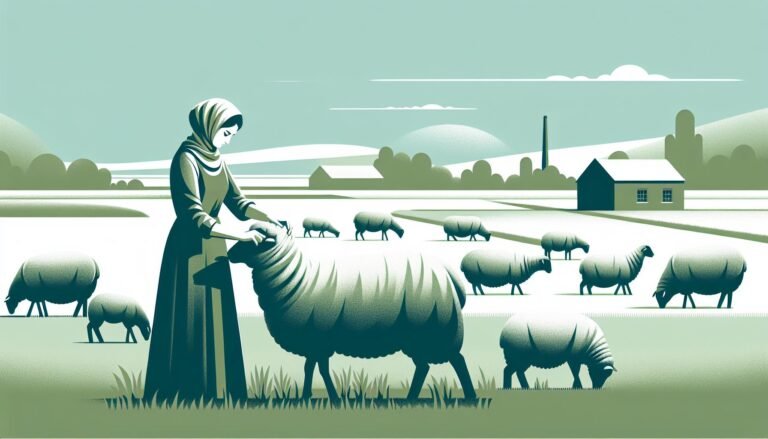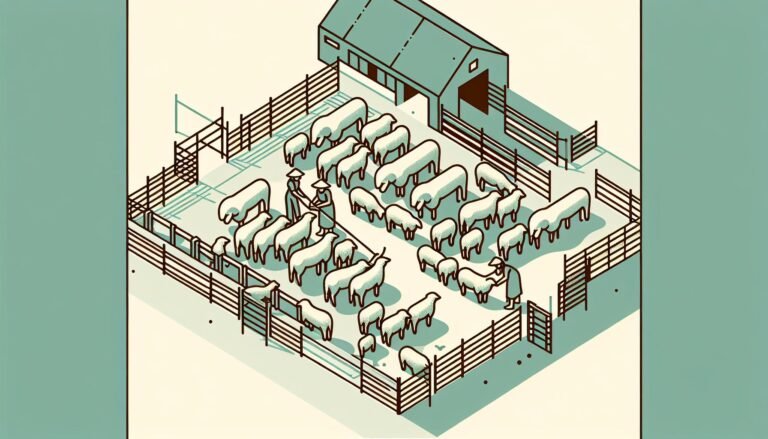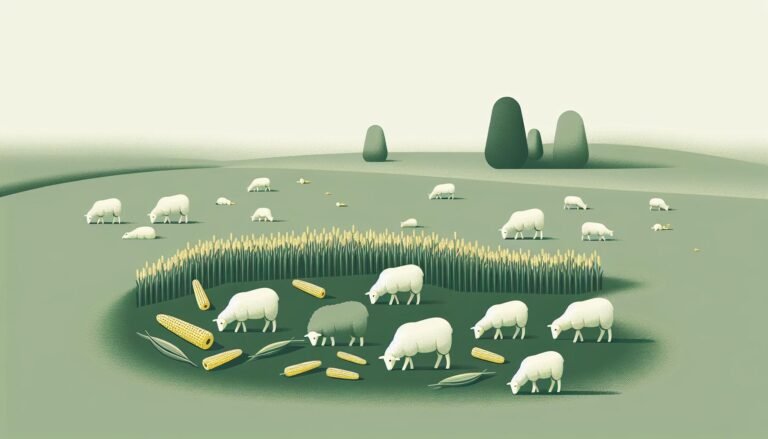Mastering the Art of Sheep Wool Cleaning: A Comprehensive Guide
Ever wondered how to clean sheep wool? It’s a process that’s both fascinating and rewarding. With the right tools and a bit of patience, you can transform raw, dirty wool into a soft, clean material perfect for crafting.
From shearing to spinning, every step in wool processing is crucial. But today, let’s focus on the cleaning part. It’s not as simple as tossing it in the wash. There’s a bit more to it than that. So, if you’re ready to get your hands a little dirty, let’s dive into the art of cleaning sheep wool.
Key Takeaways
- The process of cleaning sheep wool, also known as scouring, is critical for enhancing the wool’s quality, usability, lifespan, and preventing damage from possible parasites.
- The necessary tools and materials for cleaning sheep wool include wool shears, a wool scouring agent, two large containers, a thermometer, and mesh bags.
- Proper preparation of the wool before cleaning, such as shearing, sorting, skirting and placing wool in mesh bags, significantly impacts the cleaning outcomes.
- The steps to clean sheep wool involve soaking the wool in a solution of cold water and scouring agent, rinsing the wool in fresh cold water, and drying the wool in a place with good air circulation but out of direct sunlight.
- Proper drying of wool requires gentleness to protect the fiber quality; wringing the wool can distort the fibers.
- Proper storage of clean, dry wool entails keeping it in a cool, dark, dry place, preferably in airtight plastic containers, with proper labels. Adding cedar balls or sachets to storage can help deter moths. Regular checking and maintenance of the stored wool is also beneficial.
Why Cleaning Sheep Wool is Important
Did you know that cleaning sheep wool correctly is integral to the overall quality and usability of the wool? Yes, it’s that significant. This process, also known as scouring, carries the potential to either elevate the wool’s quality or completely devalue it. In other words, it’s an indispensable part of wool processing.
It’s in the nature of sheep to sit, roll, and play in a variety of outdoor environments, which can lead to their wool becoming dirty and potentially contaminated with soot, dirt, grease, and parasites. Moreover, sheep’s wool is rich in lanolin, a greasy substance that’s great for their skin, but not so much for those looking to spin or weave the wool. For this reason, effective cleaning is crucial.
- Improves Wool Quality: Clean wool has enhanced fiber strength, flexibility, and overall quality, making it much more desirable for further use in different industries.
- Increases Usability: With dirt, grease, and other impurities gone, the usability of the wool expands. It’s easier to card, spin, and dye, opening up a wider range of possibilities for final products.
- Prevents Damage: Proper cleaning methods protect the wool and its users from any potential harm or discomfort caused by parasites still lurking in the wool.
- Enhances Wool’s Lifespan: Lastly, regular and effective cleaning improves the lifespan of the wool.
While cleaning sheep wool is an art that requires a balance of careful handling and proper cleaning techniques, the results are well worth the effort. Understanding why cleaning sheep wool is crucial will not only improve the final product but also elevate the appreciation of this age-old practice.
With the growing trend of organic and locally sourced materials, a deeper understanding of processes like wool cleaning is of significant value. So the next time you see a woolen product, remember the meticulous care and attention it took to turn raw, dirty wool into a comfortably soft, clean product.
Tools and Materials Needed for Cleaning Sheep Wool
To embark on the rewarding task of sheep wool cleaning, you’ll need more than just elbow grease. The time spent in preparation, gathering the right tools and materials can significantly improve your cleaning outcomes. Remember that doing it right and using the appropriate tools can make a significant difference to the quality and usability of the end product.
To start with, you’ll need a staple and a pair of wool shears. The staple is used for segregating the wool into manageable clumps, while the wool shears aid in the removal of contaminated areas. Be careful while handling the shears, as you don’t want to damage the high-quality fiber that wool offers.
Next up is a wool scouring agent – your key to removing dirt, grease, and other impurities. Choose a good quality, eco-friendly scouring agent, preferably one that’s specifically designed for wool. It’s worth noting that homemade concoctions such as vinegar and mild dish soap mixture can also work effectively.
You’ll also require two large containers. These will be used for soaking and rinsing the wool respectively – ideally, these are tubs or large sinks, again, big enough for the wool to move freely.
A thermometer is an additional tool that can prove very handy. It ensures you maintain the ideal water temperature (around 140°F) during the scouring process. Too hot, and you may end up felting the wool; too cold, and the wool might not get cleaned properly.
In addition, some mesh bags or laundry bags would be useful to keep the wool separated throughout the process.
Let’s summarise all these in a neat little markdown table:
| Tools/Materials | Purpose |
|---|---|
| Wool Shears | Cutting away contaminated areas |
| Wool Scouring Agent | Removal of dirt, grease, etc. |
| Two large containers | Soaking and rinsing the wool |
| Thermometer | Maintaining ideal water temperature |
| Mesh bags | Keeping wool separated during cleaning |
Remember, these are the raw basics – like any craft, each wool cleaner will have preferred methods and materials, and that’s okay. As you progress you’ll find techniques and tools that work best for you. Practice patience, do your research, and most importantly, enjoy the process.
Preparing the Wool for Cleaning
To extract the topmost benefits from cleaning, preparing the wool correctly is equally significant. There’s more to it than catching a sheep and starting with the shears.
First on the agenda is shearing the sheep. Shearing isn’t just for obtaining the wool; it’s also beneficial for the sheep, improving the creature’s comfort and overall health. Take note, shearing might be a bit tricky if you’re new. Thus, research or asking a seasoned shepherd for a demonstration might lend you a hand.
A few basic pointers for shearing include:
- Always shear in a clean, spacious area.
- Place an old sheet or cloth beneath the sheep to collect the wool.
- Be gentle yet firm when handling the sheep.
After shearing, your wool may appear clean but don’t let appearances fool you. Hidden beneath the white fluff is the ‘grease’ – lanolin, a waxy substance excreted by the sheep’s skin glands. Lanolin helps keep the sheep’s skin moisturized but it’s not exactly what we want in our cleaned wool. The ‘dirt’ on the wool fibers and any parasites living in the wool also need to go. Therefore, keep in mind, the seeming cleanliness of your sheared wool is only a façade.
The next aspect in wool prep involves sorting and skirting. This is where you’re going to remove any undesirable parts of the fleece, such as matted areas or parts contaminated with any solid waste from the sheep. It’s also the right time to sort the wool into varying grades, as different parts of the fleece have different qualities.
The final step to prepare your wool for cleaning is to place the wool in mesh bags. Using bags helps keep the wool separated during the cleaning process and aids in maintaining the structure of the fibers.
Proper preparation ensures you’ll get the most out of your wool cleaning efforts. By carefully following these steps, you’re setting up yourself for not only a successful wool cleaning endeavor but also a rewarding experience.
Steps to Clean Sheep Wool
I’ll now walk you through the steps required to effectively clean sheep wool, making it worthy of your time and effort.
Step 1: Soaking the Wool
Firstly, using a large container, create a soaking solution using cold water and a scouring agent. Check the temperature with your thermometer – cold is key, as warm water could lock in impurities. Submerge your mesh bag of prepared wool in this solution. The idea isn’t to agitate, but let the wool soak and the natural lanolin and dirt loosen and dislodge. Leave the wool in the solution for about an hour.
Remember to pay special attention to the quality of the water. It’s vital for the cleansing process and can’t be overstated. Avoid using hard water since it can negatively affect the scouring process.
Step 2: Rinsing the Wool
With Step 1 complete, let’s move onto the rinsing process. You’ll need a second large container filled with fresh cold water. You’ll transfer the wool here for rinsing, still within its mesh bag. Don’t be afraid to rinse multiple times, until the water looks clear.
Step 3: Drying the Wool
Never overlook the drying. Proper drying is critical in maintaining the quality of the wool. Lay the clean, rinsed wool out on a clean towel or sheet. Make sure it’s in a place with good air circulation but away from direct sunlight. Turning or fluffing it occasionally will ensure it dries thoroughly.
These steps, executed with care, will ensure a great wool cleaning experience. Follow them diligently and your wool will be clean, fluffy, and ready for any project you have in mind. The benefits of cleaning sheep wool truly come to life when you see the transformation from a raw, dirty product to clean, usable wool, ready to be spun into yarn or felt. Produced right in your own hands, this is the true joy of working with wool.
Drying and Storing Cleaned Sheep Wool
Once the wool’s been rinsed, the next critical step in the wool cleaning process is drying. Proper drying is crucial to ensure that your wool maintains its quality over time. Here’s how you do it.
Firstly, never wring out the wool. It’s tempting, I know, but the pressure can distort the wool fibers. Instead, gently squeeze excess water, then lay the wool out on a clean, dry towel. Roll the towel with the wool inside, pressing gently to absorb more water. Remember, gentleness is key.
Next, you’ll want to move the damp wool to another dry towel or a mesh rack where it can dry naturally. Make sure it’s completely dry before moving on to storage. Storing damp wool could lead to mold growth, an absolute nightmare for anyone in the wool business!
Moving on to storage, the best environment to store your clean, dry wool is in a cool, dark, dry place. Direct sunlight can cause wool to fade or even degrade over time. An airtight plastic bin is a popular choice among wool enthusiasts, and I’d advise against using cardboard boxes as pests may find their way into them.
Proper labeling of your storage containers is a must. This way, you know the exact type of wool and its cleanliness level at a glance, a simple yet effective practice.
Consider adding a few cedar balls or sachets to your storage to deter moths. Moths are notorious for destroying wool, and they seem to have a knack for finding it. The smell of cedar is off-putting to them and can often keep your wool safe. Alternatively, you could use mothballs – though the smell isn’t everyone’s favorite!
Finally, remember to check on your wool from time to time. Make sure there isn’t any moisture buildup, check for those pesky moths, and rotate wool occasionally to prevent compression. This regular maintenance can seem tedious, but it’ll pay off in the end.
Conclusion
So, we’ve seen the art of cleaning sheep wool is more than just a simple wash. It’s a meticulous process that requires the right tools, materials, and a careful touch. But it’s all worth it. The transformation of raw, dirty wool into clean, usable wool ready for your next project is nothing short of magical. Remember, proper drying and storage are just as crucial as the cleaning itself. Avoid wringing out the wool and instead opt for gentle squeezing. And always store your wool in a cool, dark, dry place. With these tips, you’ll be well on your way to maintaining the quality and usability of your wool. It’s not just about cleaning, it’s about preserving and enhancing this wonderful, natural resource. Happy wool scouring!







